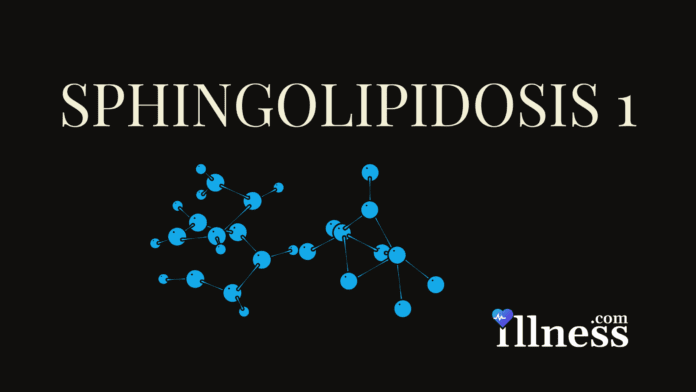Overview Of Sphingolipidosis 1
Sphingolipidosis 1 is synonymous with the term Tay-Sachs Disease. Tay-Sachs Disease is a rare inherited disorder that progressively destroys nerve cells (neurons) in the brain and spinal cord.
The most common form of Tay-Sachs disease becomes apparent in infancy. Infants with this disorder typically appear normal until the age of 3 to 6 months, when their development slows and muscles used for movement weaken. Affected infants lose motor skills such as turning over, sitting, and crawling. They also develop an exaggerated startle reaction to loud noises. As the disease progresses, children with Tay-Sachs disease experience seizures, vision and hearing loss, intellectual disability, and paralysis. An eye abnormality called a cherry-red spot, which can be identified with an eye examination, is characteristic of this disorder. Children with this severe infantile form of Tay-Sachs disease usually live only into early childhood.
Other forms of Tay-Sachs disease are very rare. Signs and symptoms can appear in childhood, adolescence, or adulthood and are usually milder than those seen with the infantile form. Characteristic features include muscle weakness, loss of muscle coordination (ataxia), and other problems with movement, speech problems, and mental illness. These signs and symptoms vary widely among people with late-onset forms of Tay-Sachs disease.
Commonly Associated With
- B variant GM2 gangliosidosis
- GM2 gangliosidosis, type 1
- HexA deficiency
- Hexosaminidase A deficiency
- Hexosaminidase alpha-subunit deficiency (variant B)
- Sphingolipidosis, Tay-Sachs
- TSD
Causes Of Sphingolipidosis 1
Mutations in the HEXA gene cause Tay-Sachs disease. The HEXA gene provides instructions for making part of an enzyme called beta-hexosaminidase A, which plays a critical role in the brain and spinal cord. This enzyme is located in lysosomes, which are structures in cells that break down toxic substances and act as recycling centers. Within lysosomes, beta-hexosaminidase A helps break down a fatty substance called GM2 ganglioside.
Mutations in the HEXA gene disrupt the activity of beta-hexosaminidase A, which prevents the enzyme from breaking down GM2 ganglioside. As a result, this substance accumulates to toxic levels, particularly in neurons in the brain and spinal cord. Progressive damage caused by the buildup of GM2 ganglioside leads to the destruction of these neurons, which causes the signs and symptoms of Tay-Sachs disease.
Because Tay-Sachs disease impairs the function of a lysosomal enzyme and involves the buildup of GM2 ganglioside, this condition is sometimes referred to as a lysosomal storage disorder or a GM2-gangliosidosis.
Other
Tay-Sachs disease is very rare in the general population. The genetic mutations that cause this disease are more common in people of Ashkenazi (eastern and central European) Jewish heritage than in those with other backgrounds. The mutations responsible for this disease are also more common in certain French-Canadian communities of Quebec, the Old Order Amish community in Pennsylvania, and the Cajun population of Louisiana. This condition is inherited in an autosomal recessive pattern, which means both copies of the gene in each cell have mutations. The parents of an individual with an autosomal recessive condition each carry one copy of the mutated gene, but they typically do not show signs and symptoms of the condition.



